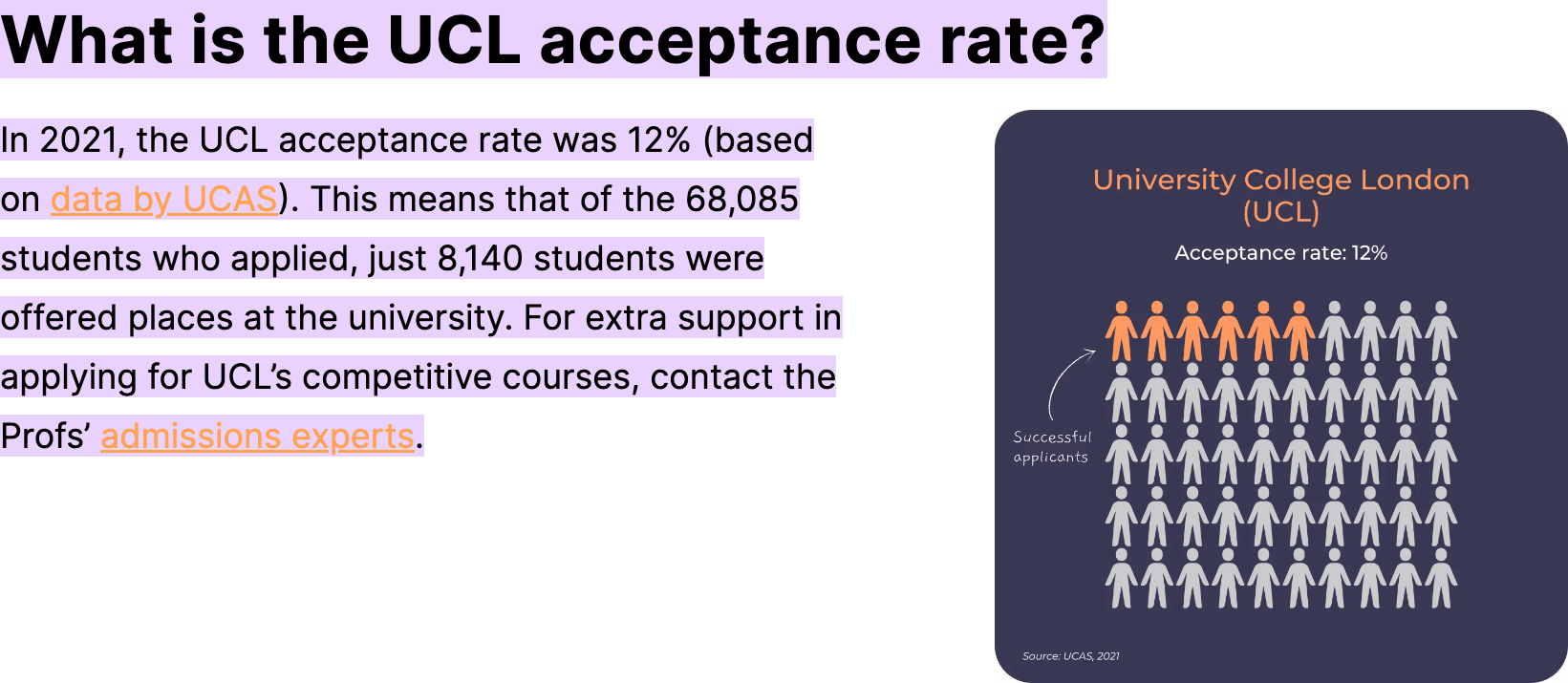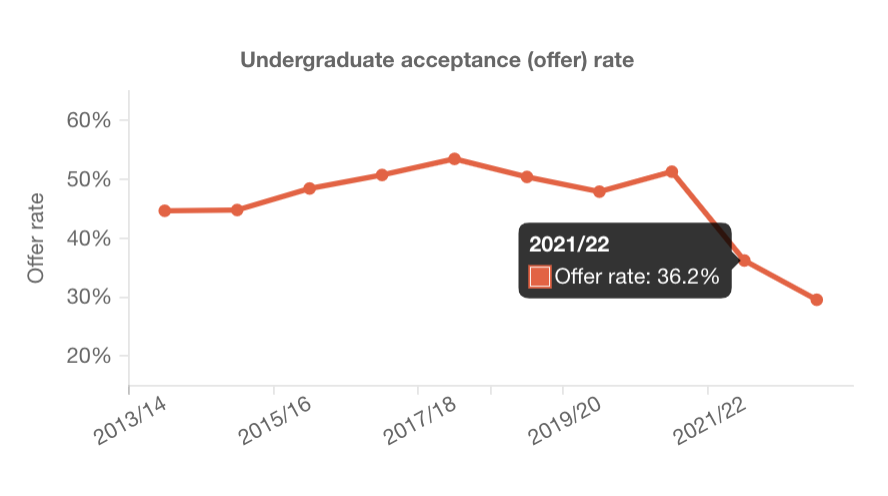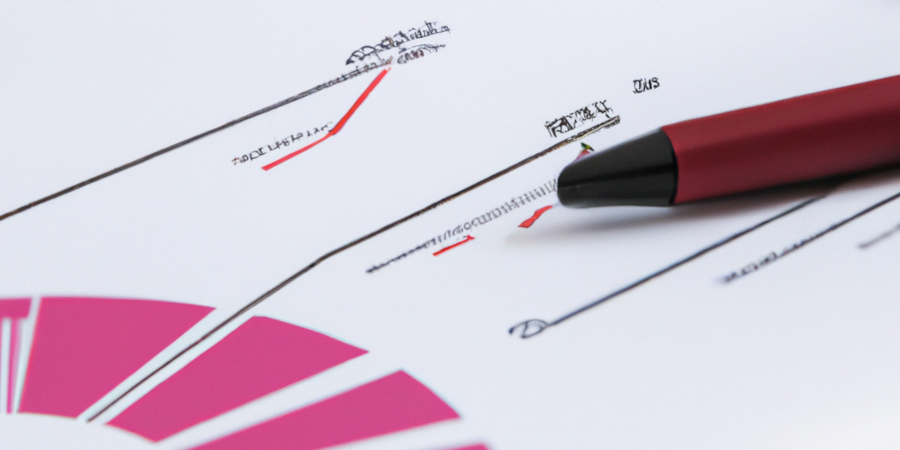There is often confusion surrounding the published offer rates and acceptance rates in various sources. For example, AdmissionReport lists the undergraduate offer rate for UCL in the academic year 2021-22 as 36.2%, while many other sources quote an acceptance rate as low as 12%. So, which figure is correct? Both are correct, but the offer rate is more helpful for understanding admission competitiveness.
When analysing admission statistics, there are three1 key numbers to consider: the number of applications, the number of offers, and the number of acceptances.
A common method of determining acceptance rate is by calculating the ratio of acceptances to applicants. This method is widely used as the number of applications and acceptances are published annually by UCAS, making it easy to calculate (whereas the offer number usually have to painstakingly collected for every university). However, it has a significant drawback as it does not take into account students who choose another program (at the same or different university) or fail to meet the conditions of their offer.
A more meaningful metric is the offer rate, which is calculated as the number of offers divided by the number of applications. This measure provides a better understanding of how competitive it is to get into a particular program, which is the whole point for looking up acceptance rates. The offer rate represents the fraction of applications that passed the scrutiny of an admission committee, and thus measures which students were actually accepted to a programme (if often on the condition of good performance in exams).
For instance, a popular tutoring website quotes 2021's UCL admission numbers published by UCAS. There were 68,085 applications, 8,140 students "were offered a place", and hence the stated acceptance rate is 12%. It further adds that "just 8,140 students were offered places at the university", which is quite misleading since the figure only considers the students who accepted the offer, and not those who declined or failed to meet the conditions.
What many other websites show:
Acceptance Rate = Acceptances ÷ Applications

In contrast, AdmissionReport provides an offer rate of 36% based on the same application numbers.2

What AdmissionReport shows:
Offer Rate = Offers ÷ Applications
We believe that the offer rate can correctly be referred to as the "acceptance rate". However, we always strive to make the distinction clear by labelling it as the "acceptance (offer) rate".
The difference between the offer and acceptance rates is influenced by two factors:
- How many offer holders choose to accept the offer
- How many offer holders meet the conditions of the offer
The latter factor usually contributes much less to the discrepancy between the two rates, making the difference between the offer and acceptance rates a tool for comparing the desirability of programs and schools.
Notes
[1] There is also the number of enrolments, which represents the accepted students who actually join the programme, but this figure is less frequently available and not as useful in determining the competitiveness of a program.
[2] There is a small discrepancy between our figure of applications (ca 69,000) and number provided by UCAS (68,085). This difference stems from minor methodological differences and is ignored at this time, with a difference of only ~1%.

